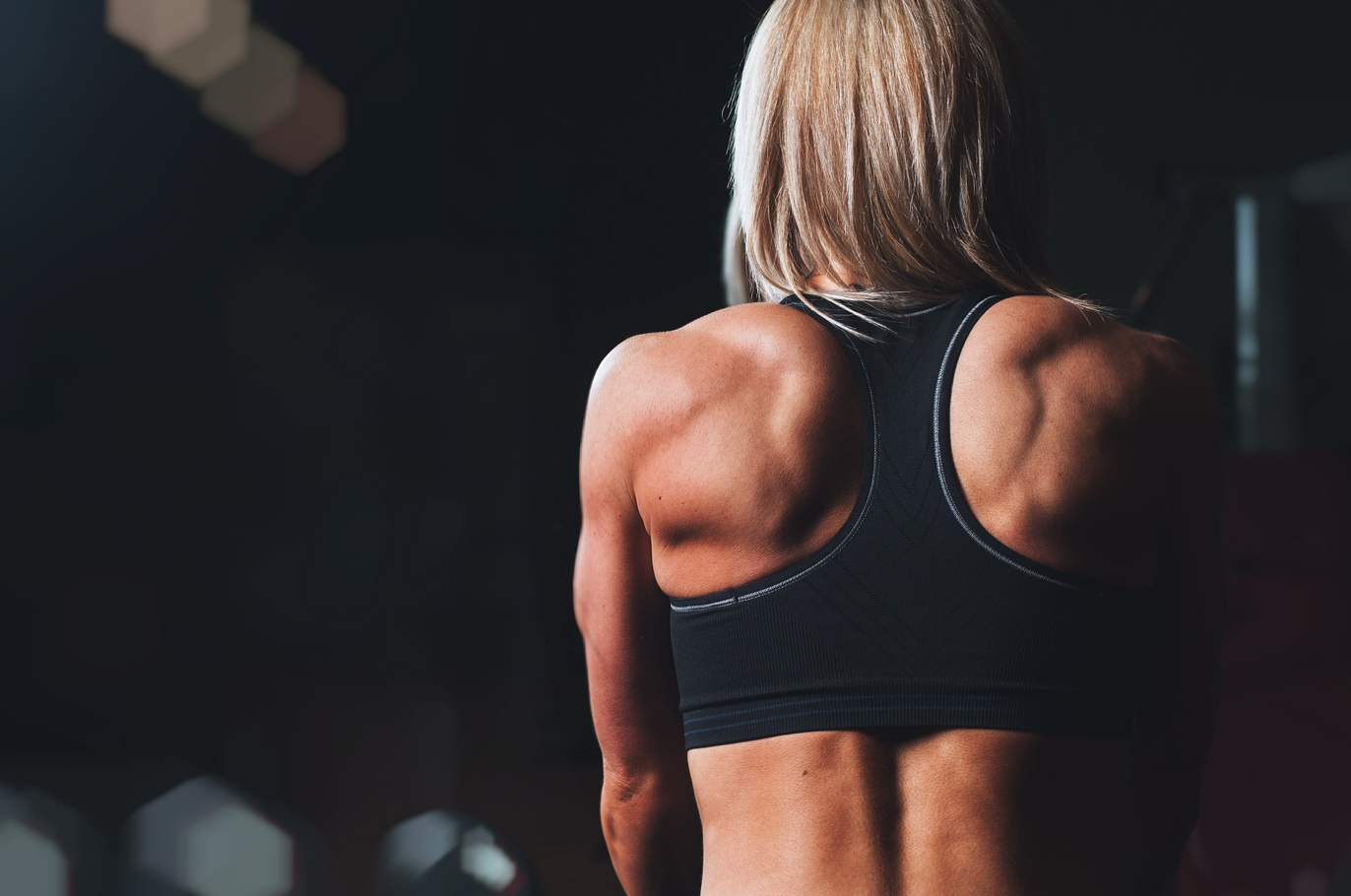Middle back pain is a problem you should take seriously, especially if you want to live a healthy, fit life.
Middle back pain can lead to a ton of problems. At the very least it could leave you with poor body posture and a dull, constant ache. But if left untreated, it could lead to so much worse. So while you can, try to relieve your mid back pain.
Now one of the ways you can relieve middle back pain is by stretching. If you want to try that out, then below are a couple of stretches for mid back pain to get you started.
Passive Backbend
Doing passive backend stretches is a great way to reduce tension, especially after a long day at work. Additionally, it will help improve your mid back’s flexibility and correct your body posture. Best done with a rolled yoga mat.
- Place a rolled yoga mat on the floor. Alternatively, you can use a rolled up towel or blanket. Additionally, you can use two yoga mats, with the other one laid out so you can keep yourself comfortable while doing this stretch.
- Lie on the floor or on the second yoga mat, with the bottom of your shoulder blades resting on the rolled mat. Make sure the rolled mat is as close to your middle back as comfortably possible.
- Stretch out your arms to your sides, and elevate your head slightly (use a pillow to stay comfortable).
- Relax in this position for 3 to 5 minutes, taking deep, long breaths at regular intervals.
(Note: For a deeper version of the Passive Backbend Stretch, use a yoga block instead of a rolled yoga mat.)
Cat-Cow Pose
Simple and gentle, the Cat-Cow Pose will help stretch and loosen up your middle back and shoulders. By adding it to your daily workout, you’ll effectively increase your flexibility and ROM. Plus, it will improve spine fluid circulation to increase your spine mobility. Best done with a yoga mat.
- Kneel on all fours, with the tops of your feet resting on the mat’s (or floor’s) surface, your hips above your knees, and your shoulders above your wrists. Make sure your back and arms are straight, and your head is facing downward. This will be the starting pose.
- Take a deep breath, then gently arch your back and drop your belly. Keep your shoulders rolled back and your head raised upward and forward. This will be the Cow pose.
- Slowly exhale, then press into your hands and round your upper back until your head looks toward your belly. This will be the Cat pose.
- Switch between Steps 2 and 3 at least 5 times each. Keep your back arched during inhales and rounded during exhales.
Child’s Pose
Like the Cat-Cow Pose and the Cobra Pose below, the Child’s Pose is a simple and gentle stretching exercise. Not only will it soothe your middle back pain; it will also alleviate any aches you’re experiencing in your thighs, pelvis, and hips. This makes it a great stretching exercise for pregnant women as well.
- Kneel on all fours on the floor or on your yoga mat. Keep your hips directly above your knees.
- Make your big toes touch each other so your belly can have a generous space to slide between your knees and to avoid straining your hips. If you can’t make your toes reach each other, then you can widen them instead.
- Maintain this position and take a deep breath. At this point, you’ll feel your spine stretching.
- Slowly exhale, then take your butt to your heels, lower your head towards the mat, and tuck your chin to your chest.
- Stay in this position for at least 5 deep breaths. Keep your forehead touching the ground or mat. If you want your head to stay comfortable or if the ground is too far, you can add a headrest beforehand. Also, keep your arms outstretched during this position.
Cobra Pose
Regularly doing the Cobra Pose will help alleviate middle back pain, prevent it from returning, and strengthen your spine in one go. As an added bonus, it will help relieve stress to a certain degree, as well as stimulate your abdominal organs for better digestion.
- Lie flat on your stomach on the floor or on your yoga mat. Then stretch your legs back on the floor. Make sure your toes are stretched out, too.
- Spread your hand under your shoulders on the floor, with your palms touching the ground surface. Then bring your elbows as close to your sides as comfortably possible. Keep your feet and toes firmly pressed onto the floor.
- Take a deep breath, then press your palms onto the ground to lift your torso up. Make sure your pelvis maintains contact with the floor or mat, lifting only up to your navel. Additionally, you should squeeze your buttocks as you lift yourself up.
- Maintain this position anywhere from 15 to 30 seconds, taking easy breaths at regular intervals. Make sure your head is raised upwards while in this pose. And keep your shoulder blades engaged while you open your chest forward.
(Note: To effectively use this pose to relieve mid back pain, make sure the backbend is evenly distributed throughout your spine.)
Latissimus Dorsi Stretch
Then there’s the Latissimus Dorsi Stretch, which you can do while standing or seated. Either way, this stretching technique will help sooth your middle back pain, while simultaneously working on the serratus muscles under your arms to increase their flexibility.
- While standing or sitting, raise your right hand over your head. Stretch your right arm straight.
- Bend your elbow until your right hand is touching your upper back.
- Place your left hand on your right elbow. Then gently pull your right arm to your left.
- At the same time, bend your body to the left as well. Make sure your torso remains straight and avoid leaning backward or forward.
- Hold this position for 20 to 30 seconds, then repeat with your other side.
Stretch Your Mid Back Pain Away
Middle back pain is a problem you should take seriously, especially if you want to live a healthy, fit life. By adding the stretches above to your daily exercise routine, you’ll be able to soothe mid back pain in a jiffy.
Editor’s note: The information in this article is not meant to take the place of qualified medical advice. Talk with your healthcare practitioner before beginning any type of stretching or exercise regimen.


Join the conversation!